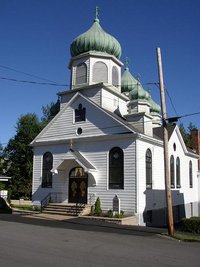Difference between revisions of "ROCOR and OCA"
m |
m (→Early 1980's: the Calendar Schism) |
||
| Line 4: | Line 4: | ||
==Early Years== | ==Early Years== | ||
| − | ==Early | + | ==Early 1980s: the Calendar Schism== |
| − | In the early | + | In the early 1980s, Bishop [[Herman (Swaiko) of Washington and New York|Herman (Swaiko) of Philadelphia]], the OCA's bishop for Eastern Pennsylvania, decreed that all of his parishes would begin using the [[Revised Julian Calendar]]. Some were already using it, but others had been using the [[Julian Calendar]] steadily up to that point. |
{{stub}} | {{stub}} | ||
Revision as of 13:12, May 23, 2005
The ROCOR and the OCA have a complicated history of cooperation, rivalry, and sometimes outright hostility. These two jurisdictions, the Russian Orthodox Church Outside Russia and the Orthodox Church in America, both have their origins in the Church of Russia (a.k.a. the Moscow Patriarchate or MP), and their histories as clearly identifiable entities both stem from the Bolshevik Revolution in Russia in the early 20th century.
Early Years
Early 1980s: the Calendar Schism
In the early 1980s, Bishop Herman (Swaiko) of Philadelphia, the OCA's bishop for Eastern Pennsylvania, decreed that all of his parishes would begin using the Revised Julian Calendar. Some were already using it, but others had been using the Julian Calendar steadily up to that point.
This article or section is a stub (i.e., in need of additional material). You can help OrthodoxWiki by expanding it.
External links
- ROCOR
- Book Review: A History of the Orthodox Church in America (1917-1934), a ROCOR layman critiques a history by an OCA bishop
